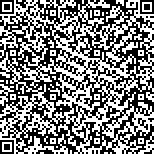|
| 引用本文: | 李鸿鹏,富裕,任夙艺,王志铮,林祖好.舟山近海日本囊对虾野生群体与越冬养成群体形态性状对体重和肉重影响的比较.海洋与湖沼,2015,46(5):1218-1227. |
| |
|
| |
|
|
| 本文已被:浏览 3101次 下载 1918次 |

码上扫一扫! |
|
|
| 舟山近海日本囊对虾野生群体与越冬养成群体形态性状对体重和肉重影响的比较 |
|
李鸿鹏1, 富裕1, 任夙艺1, 王志铮1, 林祖好2
|
|
1.浙江海洋学院 舟山 316022;2.岱山沙城养殖场 岱山 316200
|
|
| 摘要: |
| 于舟山近海日本囊对虾(Marsupenaeus japonicus)海捕野生群体和露天池塘越冬养成群体中各随机选取150尾作为测定样本,依次测量其体重(Y1)、肉重(Y2)、体长(X1)、头胸甲长(X2)、胸宽(X3)、胸高(X4)、第二腹节长(X5)、第二腹节宽(X6)、第二腹节高(X7)、尾节长(X8)、尾节宽(X9)、尾节高(X10)、眼径(X11)、眼窝距(X12)、额剑长(X13)、额剑上缘锯齿数(X14)等16项表型性状,并采用相关分析、通径分析和偏回归分析等方法定量研究了日本囊对虾形态性状对野生海捕群体与露天越冬养成群体体重和肉重的影响效应。结果表明:(1)两实验测定群体的体重和肉重与本研究中除X14外的其它形态性状的相关系数均达到极显著水平(P<0.01);(2)经通径分析,海捕野生群体被保留的形态性状与体重和肉重的复相关指数分别为0.944和0.837,露天越冬养成群体被保留的形态性状与体重和肉重的复相关指数分别为0.955和0.907,其中影响露天越冬养成群体体重和肉重的核心变量均为X1,重要变量依次为X2和X6,影响海捕野生群体体重和肉重的核心变量分别为X1和X2,重要变量均为X6;(3)经多元回归分析,得出了用于估算海捕野生群体体重和肉重的回归方程以及估算露天越冬养成群体体重和肉重的回归方程。 |
| 关键词: 日本囊对虾 海捕野生群体 越冬养成群体 形态性状 体重 肉重 多元分析 |
| DOI:10.11693/hyhz20150300087 |
| 分类号: |
| 基金项目:舟山市海洋类科研攻关项目,2013C41013号;宁波市海洋与渔业专项资金项目"宁波市本级增殖放流技术指导和效果评估(甬财政发[2005]101号,甬海[2015]16号)"。 |
| 附件 |
|
| COMPARISON IN THE EFFECT OF MORPHOLOGICAL TRAITS ON BODY WEIGHT AND MEAT WEIGHT OF MARSPENAEUS JAPONICUS FROM WILD AND OVERWINTERED CULTIVATED GROUPS IN ZHOUSHAN OFFSHORE REGIONS |
|
LI Hong-Peng1, FU Yu1, REN Su-Yi1, WANG Zhi-Zheng1, LING Zu-Hao2
|
|
1.Zhejiang Ocean University, Zhoushan 316022, China;2.Shacheng Aquafarm, Daishan County, Daishan 316200, China
|
| Abstract: |
| We sampled 150 Marspenaeus japonicus from wild and overwintered cultivated groups, and 16 phenotypic traits were measured, namely, body weight(Y1), meat weight(Y2), body length(X1), carapace length(X2), chest width(X3), breast height(X4), second abdominal segment length(X5), second abdominal segment width(X6), second abdominal segment height(X7), telson length(X8), telson width(X9), telson height(X10), diameter of eye(X11), distance of eye socket(X12), rostrum length(X13), and rostrum sawteeth numbers at superior margin(X14). Correlation analysis, path analysis and partial regression analysis were used to study the effect of morphological traits on body weight and meat weight of M. japonicus from the two groups. The results indicate that all the correlation coefficients between each morphological traits, and body weight and meat weight were extremely significant(P<0.01) except X14. The correlation indexes of the reserved morphological traits on body weight and meat weight in wild group were 0.944 and 0.837, respectively, and the correlation indexes of the reserved morphological traits on body weight and meat weight in cultivated group were 0.955 and 0.907, respectively through the path analysis. The key variable to affect the body weight and meat weight in the cultivated group were both X1, and the importance degree is in the order of X1>X2. The key variable to affect the body weight and meat weight in the wild group were X1, and X2, respectively, and X6 was important for both groups. Multiple regression equations used to estimate body weight, and meat weight of wild group were Y1=0.152X1+0.217X3+0.439X6+0.327X9-0.100X13-12.456, and Y2=0.129X2+0.155X3+0.17X6+0.184X11-0.078X14-4.267, respectively. Similarly, multiple regression equations used to estimate body weight, and meat weight of overwintering cultivated group were Y1=0.180X1+0.228X2+0.129X4+0.287X6+0.330X9+0.412X10-0.371X12-20.677, and Y2=0.127X1+0.253X6-0.276X12-9.972, respectively. |
| Key words: Marspenaeus japonicus wild group overwintered cultivated group morphological traits body weight meat weight multiple regression multivariate analysis |
|
|
|
|
|
